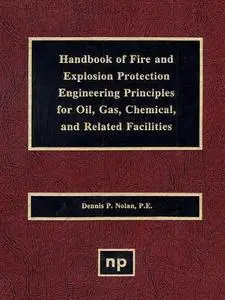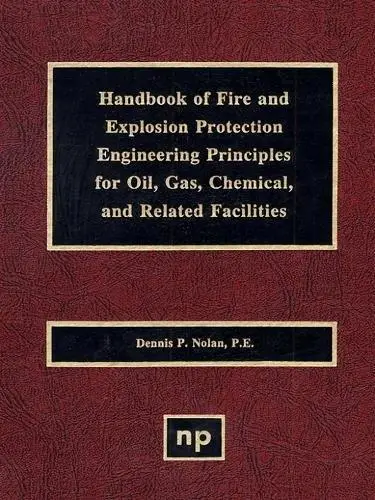Handbook of Fire & Explosion Protection Engineering Principles for Oil, Gas, Chemical, and Related Facilities By Dennis P. Nolan, P.E. (Auth.)
1996 | 294 Pages | ISBN: 0815513941 | PDF | 18 MB
1996 | 294 Pages | ISBN: 0815513941 | PDF | 18 MB
Content: About the Author, Page viiPreface, Pages ix-xList of Figures, Page xiList of Tables, Page xiiChapter 1 - Introduction, Pages 1-8Chapter 2 - Overview of Oil and Gas Facilities, Pages 9-16Chapter 3 - Philosophy of Protection Principals, Pages 17-26Chapter 4 - Physical Properties of Hydrocarbons, Pages 27-40Chapter 5 - Characteristics of Hydrocarbon Releases, Fires and Explosions, Pages 41-61Chapter 6 - Historical Survey of Fire and Explosions in the Hydrocarbon Industries, Pages 62-86Chapter 7 - Risk Analysis, Pages 87-94Chapter 8 - Segregation, Separation and Arrangement, Pages 95-103Chapter 9 - Grading, Containment, and Drainage Systems, Pages 104-110Chapter 10 - Process Controls, Pages 111-115Chapter 11 - Emergency Shutdown, Pages 116-124Chapter 12 - Depressurization, Blowdown and Venting, Pages 125-136Chapter 13 - Overpressure and Thermal Relief, Pages 137-142Chapter 14 - Control of Ignition Sources, Pages 143-153Chapter 15 - Elimination of Process Releases, Pages 154-158Chapter 16 - Fire and Explosion Resistant Systems, Pages 159-176Chapter 17 - Fire & Gas Detection and Alarm Systems, Pages 177-195Chapter 18 - Evacuation, Pages 196-201Chapter 19 - Methods of Fire Suppression, Pages 202-227Chapter 20 - Special Locations, Facilities and Equipment, Pages 228-239Chapter 21 - Human Factor and Ergonomic Considerations, Pages 240-248Appendix A.1 - Testing of Firewater Pumping Systems, Pages 250-253Appendix A.2 - Testing of Firewater Distribution Systems, Pages 254-257Appendix A.3 - Testing of Sprinkler and Deluge Systems, Page 258Appendix A.4 - Testing of Foam Systems, Page 259Appendix A.5 - Testing of Hose Reels and Monitors, Pages 260-261Appendix B.1 - Fire Resistance Testing Standards, Pages 263-265Appendix B.2 - Explosion and Fire Resistance Ratings, Pages 266-268Appendix B.3 - National Electrical Manufacturers Association (NEMA), Pages 269-272Appendix B.4 - Hydraulic Data, Page 273Appendix B.5 - Selected Conversion Factors, Pages 274-277Acronym list, Pages 278-282Glossary, Pages 283-288Index, Pages 289-291



